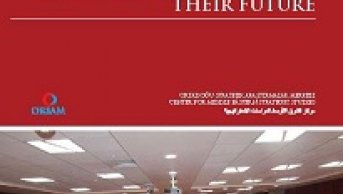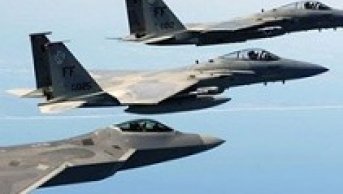Waltz Made International Politics Easier

When a tree is felled in a thick forest, only those who perform the task notice -- similar to when there is a death in a family.
It is only family members and close friends who are saddened. When an old oak tree is felled in the central town square, it affects the whole town and not just those living nearby. If we imagine the town to be the whole of academia, and the town square the arena of international relations, the mighty tree that fell last month was Kenneth Waltz.
International relations are hard to understand at the best of times. As with domestic politics, outcomes are hard to predict and the correct strategies not as easy as first believed. Throughout history, politics both in its domestic and international aspects has been considered more of an art than a science. Nevertheless, statesmen have always wanted to make the right calculations, leaving no room for error. Hence, in the 20th century efforts were made to try to establish an academic framework within which to understand the reasons for war and peace as well as other important international political developments.
Waltz was a giant in this field of study and influenced scholars for more than half a century. He first made a name for himself in the immediate aftermath of World War II, when many were trying to make sense out of why wars occurred as well as why and how states behaved. Into this maelstrom of inquiry Waltz waded with a pivotal book in 1959 titled “Man, the State and War: A Theoretical Analysis.” In this major work he introduced the novel yet simple idea that international relations could be seen from three different layers.
Causes of war
First, one could provide insights from the point of view of human nature, of individual decision-makers. Looking at prime ministers and presidents and their motives and emotions could prove to be useful. At this level conflict is equated with man’s base instincts. As long as man does not change, then war will remain the key feature of society. If man can change, then war may be eradicated. It must be said, Waltz was not very hopeful.
A different way to understand international relations and the causation of war was to look at states and their behavior. The state level was a more binding level than the individual level as it was institutions and processes that were at the center of interest rather than the individual decision-maker. The third level of inquiry was from a systemic perspective, focusing on the assumption that states collided with one another over interests with no superior authority in the international arena. Due to such features of the international system, it was through a balance of power concept that an insight into the behavior of states when attempting to avoid war could be observed. Therefore, the best way to make sense of why modern wars took place was to concentrate on the effects of the international system on states.
Twenty years later, Waltz’s second classic work titled “A Theory of International Politics” introduced a new understanding of the world at large that centered on six assumptions: anarchy, structure, capability, distribution of power, polarity and national interest. In fact, through this work, Waltz created -- as the title of the book announces -- a new theory.
By anarchy, we usually think of no order, of chaos. In international relations, Waltz identified the structure as being anarchic, whereby there was no legitimate global authority. While domestic politics was hierarchical in terms of law, administration and so forth, these were absent in international relations.
In terms of structure, each actor was responsible for its own security, given the absence of a global authority. As states possessed the legitimate right to use force, they were embodied in a self-help system, trying at the very least to survive. Following on from this circumstance, capabilities became highly important. In order to ensure survival and prevent other states from attacking in an anarchic environment, all states had to increase their capabilities. What exactly were these? They could be summed up in five categories: natural resource endowment, demography, economic, military and technological capacities. Depending on their scores in each category, states could be compared with one another, thus discovering their relative capabilities.
Due to the sense of insecurity created by the anarchic international system, states constantly desired to possess ever greater capabilities, first to survive and later to prosper. Such desires led to neighboring states fearing the increase in their rivals’ capabilities, which in turn enticed them to add to their own capabilities, leading to an ever-increasing spiral termed the security dilemma.
In the desire for security, states inevitably differed in their levels of capability. Their ranking in terms of the distribution of capabilities was measured by assessing how they performed in all the different components. This logically led to the key feature of polarity. Given that all states had different scores with regard to capabilities, whether in terms of military strength, economic wealth or huge energy resources, polarity was ascertained from examining which states had the highest rankings in terms of overall capabilities.
Polarity
Throughout world history, three forms of polarity were identified as being the most common: unipolar, bi-polar and multi-polar. The first referred to a single state being superior to all other states in the world in terms of demographic, economic, military and technological capabilities. Bi-polarity existed when such capabilities were mainly distributed between two prominent states -- as was the case during the Cold War when the US and the Soviet Union represented the two “poles” of power. As for multi-polarity, such a situation existed when more than two states possessed nearly equal amounts of relative capability. Historical examples of multi-polarity were identified as the time periods following up to and lasting throughout World War I and World War II.
Lastly, national interest is an important notion to consider, according to Waltz. While this is an elusive concept, as states focus on increasing their capabilities so as not to fall behind other states, the desire to add to capabilities becomes a national interest. Depending on their relative ranking in the world, states devise strategies to ensure survival.
Nuclear weapons
Having refined this insightful comprehension of international relations, Waltz remained at center stage of the academic field of international relations and was not averse to controversy. The author of this article recalls very clearly when Waltz spoke to graduate students at Cambridge University in 1990, sharing his belief that more nuclear weapons would not decrease but increase global security. He did not waiver from his view as he continued to assert in March of this year, in one of his final interviews, that a “nuclear-armed” Iran would not be a threat to regional peace as possessing such weapons had demonstrated constraint. Waltz believed that whatever the regime, none would choose a path that would lead to the destruction of their state. Nuclear weapons would protect the present peace, rather than prepare for a future war.
Today’s world finds itself facing a turbulent state of affairs. These range from, but are not limited to: trying to pull itself out of a swamp-like economic malaise; attempting to find a solution to the ongoing bloodshed and increasing violence in Syria; fearing the proliferation of weapons of mass destruction especially to regimes defending a radical agenda; fretting over energy dependency and the over-reliance on oil; struggling to come to terms with the rise of the East and the gradual weakening of the West; striving to contain international terrorism; and pursuing strategies to ensure higher levels of health standards and the reduction of global poverty.
All these challenges are important and require multilateral action, and no single entity can provide an effective solution to any of the abovementioned issues. While Waltz never considered himself to have a magic wand to offer solutions to global problems, he has bequeathed generations of international relations students the means with which to make better sense of the world. In addition to this, for this author at least, is the recollection of his eloquent delivery as well as his admirable bow tie.
It is true that a mighty tree has fallen, though it has grown strong branches that continue to shine a light on understanding world politics.









